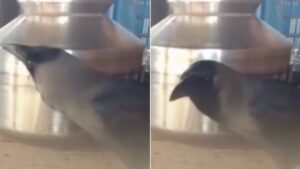Why Birds Fly in a V Formation: The Science Behind Their Clever Strategy

Ever gazed up at the sky and marveled at birds flying in a perfect V-formation? It’s not just a pretty sight—it’s a brilliant energy-saving tactic. Scientists have long known that this formation helps birds conserve energy, but new research reveals just how precise their coordination really is.
The Aerodynamic Advantage
Birds adopt the V-shape not for aesthetics but for pure efficiency. The lead bird breaks through the air, creating an uplift that makes flying easier for those behind. Each bird carefully positions itself to ride these air currents, reducing fatigue during long migrations. A study published in Nature and highlighted by Science.org confirms that this isn’t random—it’s a finely tuned strategy.
High-Tech Insights Into Bird Flight
To understand this phenomenon, researchers tracked northern bald ibises during a migration from Austria to Italy. Equipped with tiny data loggers, the birds’ every wingbeat and position were recorded with astonishing accuracy. The findings? Birds don’t just follow—they actively adjust their flaps and positioning to maximize lift while minimizing drag.
James Usherwood, a biomechanist from the Royal Veterinary College, noted, “Air gets pretty darn wiggy behind a flapping wing.” Yet, these birds expertly navigate the turbulence, syncing their movements like a well-oiled machine.
Does This Apply to All Birds?
While the study focused on ibises, experts believe larger birds like geese, pelicans, and storks use similar tactics. Their long wings make it easier to ride updrafts. Smaller birds, however, may struggle due to their rapid, erratic wingbeats.
Next time you see a V-formation overhead, remember—it’s not just teamwork, it’s nature’s genius at work.









